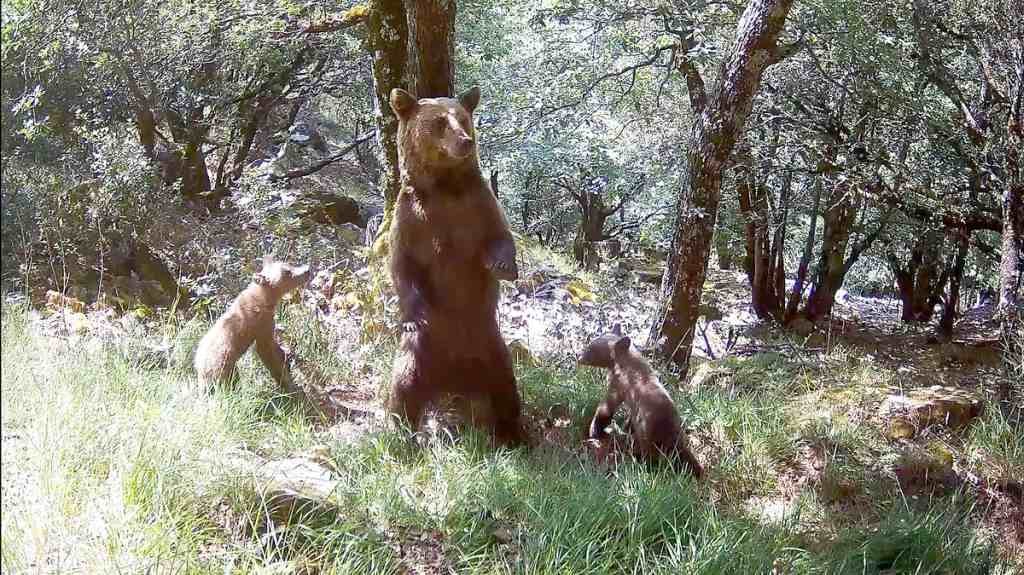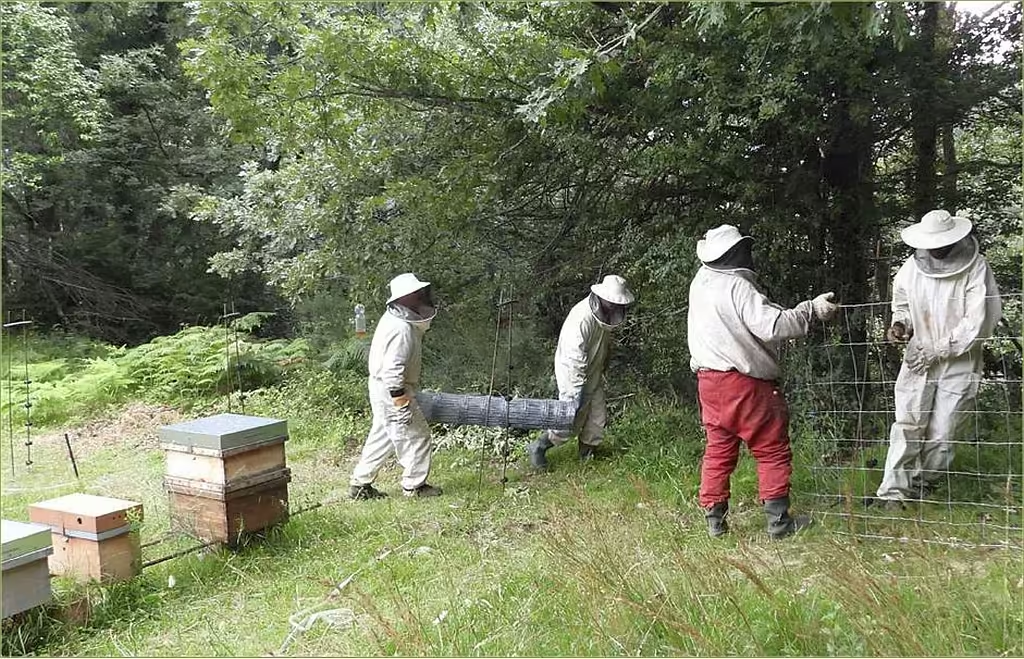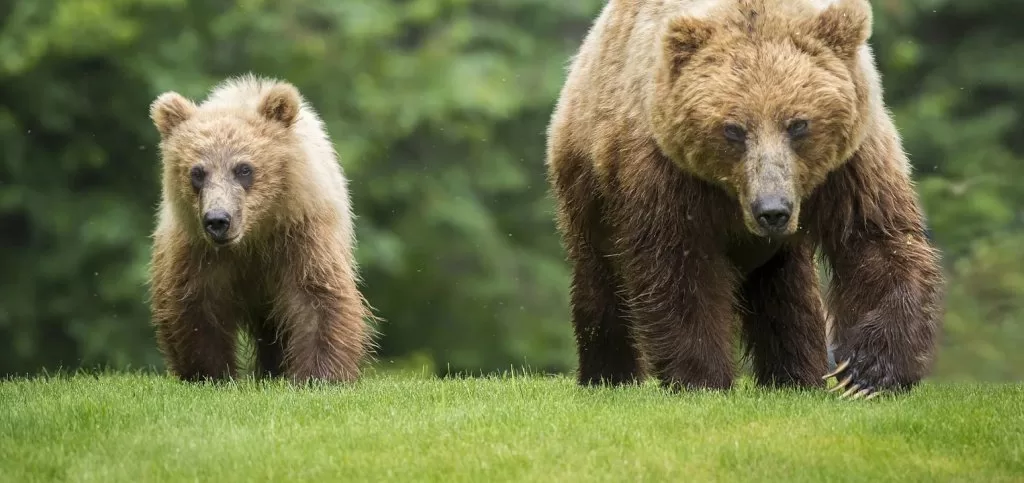The brown bear population in the Cantabrian Mountains has been a topic of significant discussion and research. Recent data and conflicting reports have sparked debates about the true state of the population and the effectiveness of conservation efforts.
This article aims to consolidate information from two contradictory reports to provide a comprehensive overview of the current situation.
Population Estimates and Monitoring Efforts
According to official fieldwork carried out between 2020 and 2021, the brown bear population in the Cantabrian Mountains is estimated to be at 370 individuals. This estimation was based on the individualized identification of non-invasive samples, primarily feces. The Ministry of Environment and Territorial Planning highlighted that these efforts involved the autonomous communities of Castilla y León, Principality of Asturias, Cantabria, and Galicia. They focused on census collection, vigilance against threats, GPS tracking, and measures for human-bear coexistence.
So I have had a search on the website of the The Ministry of Environment and Territorial Planning and here is an example of their terrible lack of transparency… I certainly can’t find any new publication from 2022, 2023, or 2024. Here is an example: https://www.miteco.gob.es/es/biodiversidad/publicaciones/pbl-fauna-flora-estrategias-oso-cantabrico.html
Please feel free to leave a comment at the bottom of this article if you are reading this and find any more information from their awful website! Thanks! 🙂
Conservation Success and Challenges
The recovery of the brown bear population over the past 30 years is seen as a significant conservation success. The population has grown from an estimated 80-100 individuals in the 1990s to 370 by 2020-2021. This increase has necessitated habitat protection measures and precise techniques to deter bears from urban environments. Despite this success, there are concerns about data manipulation and the true number of bears, particularly in the eastern subpopulation.
Controversial Findings and Criticisms
In 2023, a genetic census estimated the population at over 350 bears, with about 120 in the eastern region. However, FAPAS, an independent conservation organization, disputes these figures. They argue that the actual number of breeding females in the eastern region does not support such a high population estimate. FAPAS suggests that the official data might be manipulated for political reasons, emphasizing the need for transparency and scientifically backed methods in population evaluation.

The Role of FAPAS and Independent Monitoring
FAPAS has been monitoring the brown bear population for decades, using fieldwork and genetic identification to track individual bears. They argue that the government’s current methods lack transparency and might be influenced by political interests. FAPAS continues to protect bear habitats, prevent conflicts, and provide accurate data to counteract any potential misinformation.
Managing Conflicts and Protecting Habitats

One of the significant challenges in bear conservation is managing human-bear conflicts, especially in areas where bears damage apiaries and fruit orchards. FAPAS has been proactive in protecting apiaries and mitigating conflicts through effective techniques. They stress the importance of preventing damage rather than merely compensating for it. Despite limited support from the administration, FAPAS’s efforts have shown success in reducing bear-related damages.
Addressing the “Problem Bears”
The concept of “problem bears” has emerged with the increasing population. These are bears that exhibit unusual behaviors, such as frequenting human settlements. Some argue that the issue is exaggerated to secure funding and justify certain management practices. FAPAS advocates for preventive measures, such as installing anti-bear containers and preventing bears from accessing food in human environments, rather than capturing and relocating the animals.

“This photograph itself exemplifies poor bear management and conservation in Asturias. The bear trap is placed right next to all the rubbish as a bear approaches the containers. The containers are full of waste from local restaurants.
The proposed solution: capture the bear and relocate it. FAPAS asked Cogersa, the company responsible for waste collection in Asturias, to install anti-bear containers, as seen in other countries in Europe and America.
Instead, they prefer to create trouble for a bear merely looking for food inappropriately disposed of. What will happen when more bears approach the dumpsters? Will they keep relocating them all?”. Photo: https://www.fapas.es/noticias/nuevo-boletin-de-fapas-2024
Conclusion and further reading
The brown bear population in the Cantabrian Mountains could well be a symbol of successful conservation efforts but also highlights the challenges of wildlife management.
Accurate data, transparent methods, and effective conflict prevention are crucial for sustaining this success.
Independent organizations like FAPAS play a vital role in ensuring that conservation strategies remain effective and scientifically grounded. Moving forward, it is essential to balance population growth with habitat protection and conflict mitigation to secure the future of the brown bear in Spain.
However, from this authors point of view, if neither of the organisations mentioned in this article can actually get around to publishing accurate and up to date information (I mean at least last years census) on their websites how do they think they will maintain any kind of public consensus for their projects? I still don’t know how many bears there are in Spain!
See FAPAS here: https://www.fapas.es/noticias/nuevo-boletin-de-fapas-2024
Read more in depth information about the brown bear in Spain here: https://wildsideholidays.co.uk/cantabrian-brown-bear-ursus-arctos-oso-pardo-cantabrico/
And, FAPAS complaining about the methods used to create the brown bear census in Spain: https://wildsideholidays.co.uk/debate-ensues-over-the-best-methodology-for-cantabrian-bear-census-as-genetic-analysis-sparks-controversy/
Ronda Today
Everything you need to know before you visit Ronda “The city of dreams” in Andalucia. https://www.rondatoday.com/
Visit Cádiz
Planning on visiting Cádiz? Tourist information. Monuments. Hotels. Activities. City guides: https://visitingcadiz.com/
The Caminito del Rey
Find tickets for the Caminito del Rey: https://www.caminodelrey.es/
Wildside Holidays – Spain
Take a trip on the Wildside! Discover the wildlife and nature of Spain, its Natural and National Parks and find the top wildlife, activity and walking holiday companies.
Iberia Nature Forum
Discover the Iberia Nature Forum – Environment, geography, nature, landscape, climate, culture, history, rural tourism and travel.
I’ve been living in this lovely area of Western Andalucia for the last 20 years or so and dedicate most of my time to the running of English language tourist information websites for the towns of Cádiz, Ronda, Grazalema, the famous or infamous Caminito del Rey, and also Wildside Holidays, which promotes sustainable and eco-friendly businesses running wildlife and walking holidays in Spain. My articles contain affiliate links that will help you reserve a hotel, bus, train or activity in the area. You don’t pay more, but by using them you do support this website. Thankyou!
